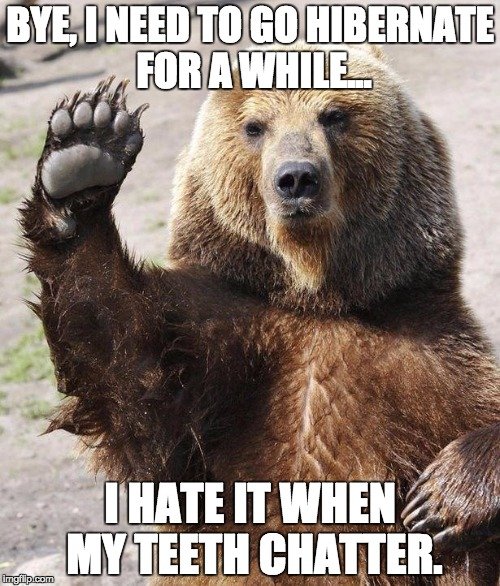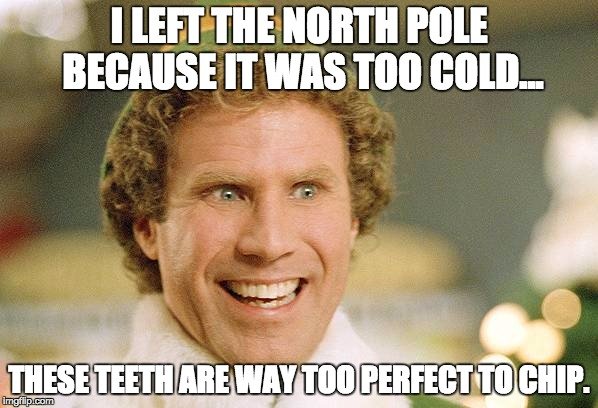Table of Contents (click to expand)
Chattering teeth happen because our facial muscles are shaking in an attempt to get warm, causing our teeth to bang into one another and “chatter”.
Imagine the last time you stepped out into a brisk autumn morning without a sweater on, just to let that cold air wake you up. The first few seconds might be refreshing, but after that, a peculiar thing happens. The tip of your nose will start getting cold, and then a bit of a shiver will run down your spine. Within a few minutes, your teeth begin to bang against one another – chattering – and there’s almost nothing you can do to stop it!
This happens to everyone – except those who live in climates that never get chilly – but what is the real cause of this peculiar physical phenomenon? Why do our teeth chatter when we’re cold?
Short answer: This occurs because our facial muscles are shaking in an attempt to get warm, causing our teeth to bang into one another and “chatter”.
Is Your Blood Cold Or Warm?
Cold-blooded animals – insects, amphibians, reptiles and fish, among others – don’t have to worry about their surroundings as much, because they simply change temperature to fit in. When it’s hot outside, the animal becomes hot; when it’s cold, their body temperature remains cold. They are specially adapted to stay alive and functional, despite these sometimes extreme sweeps in exterior temperature.
However, as warm-blooded animals – like the vast majority of other mammals and birds – human beings have a rather narrow temperature range where they are truly “comfortable”. Our bodies also do their best to maintain a steady temperature, despite the surrounding conditions. This is the same reason we wear coats and scarves in the winter, but shed those layers once summertime comes out to play. Warm-blooded animals don’t do well in extreme temperatures, so they tend to stay in their preferred environments, hibernate if necessary, and regulate their body temperature as best they can.

Human beings, however, globe-trotting explorers that we are, often put ourselves into environments that alter our preferred internal body temperature away from 98.6 degrees. To counteract this, we have created clothing, elaborate shelters, heating and cooling systems, and various other tools to help us regulate. However, when we step outside, or when our regulatory tools don’t work properly, the body must take on the task and find a way to get that temperature back to normal…
Also Read: Why Do We Open Our Mouths When We’re Shocked?
Sweating And Shivering
The two most common temperature regulation tools used by humans are sweating and shivering. As you hopefully know, sweating occurs when the body’s temperature goes above the preferred range. By releasing sweat, the body cools itself down in two ways. First, by releasing moisture onto the skin, it “feels” cooler. Just pour some water on your hand and stand next to an open window; doesn’t your wet hand feel slightly cooler? Secondly, when the sweat on your skin eventually evaporates (provided you are in a relatively humidity-free environment, it will take some of your body heat with it.
On the other end of the spectrum, when your body’s internal temperature begins to fall below the preferred range, the body needs to create extra warmth. The skeletal muscles – from your shins and thighs to your shoulders, hands and cheeks – will begin to gently (or violently) shake and shiver, which expends energy and thereby releases heat. Despite the fact that shivering is normally a sign that you’re cold, the process itself is intended to keep you warm!
Shivering + Facial Muscles = Chattering Teeth
As you’ve probably already figured out, the combination of shivering skeletal muscles, including those in your face and jaw, with two rows of perfectly clack-able teeth, results in the strange chattering noise that seems to involuntarily occur when we are standing out in the cold. Very subtle chattering might happen as a result of a small chill, but when your body’s internal temperature falls significantly, shivering and chattering can both become quite powerful, causing muscle pain or even chipped teeth!
Granted, there are many other types of “self-inflicted” injuries to the teeth that are far more common – such as grinding of the teeth (bruxism) or constant flexing and contracting of the jaw muscles (oromandibular dystonia). However, as satisfying as a good teeth chatter can be from time to time, especially if it warms up your face, you don’t want to run the risk of chipping those pearly whites!

Basically, whether you’re walking through a blizzard in a t-shirt or simply sitting next to a drafty window on a cool spring night, don’t freak out when your teeth start to involuntarily bang into one another. They don’t have a mind of their own; it’s just your body’s way of telling you that it’s working hard to keep your temperature regulated – and possibly suggesting that you put on a sweater!
Also Read: Why Do We Grind Our Teeth?
How well do you understand the article above!

References (click to expand)
- Why do your teeth chatter when you are cold? - UCSB Science Line. The University of California, Santa Barbara
- Warm and Cold Blooded Animals - coolcosmos.ipac.caltech.edu
- Frank, S. M., Raja, S. N., Bulcao, C., & Goldstein, D. S. (2000, July 1). Age-related thermoregulatory differences during core cooling in humans. American Journal of Physiology-Regulatory, Integrative and Comparative Physiology. American Physiological Society.
